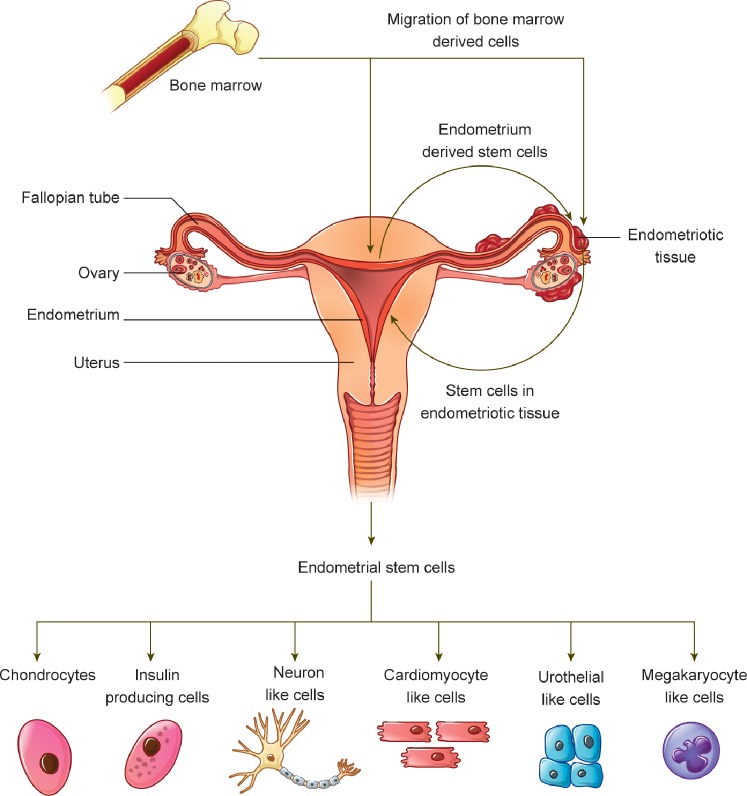FIG. 1.
Schematic illustration of the migration and engraftment of BMDCs, EDSCs, and the differentiation potential of EDSCs. BMDCs migrate and engraft in the endometrium and endometriotic lesions. The presence of endometriotic lesions can decrease the flux of these cells to the eutopic endometrium. Furthermore, cells from endometriotic lesions can migrate back to the endometrium. Both of these mechanisms present a novel mechanism of endometriosis-related infertility. Once harvested from the endometrium and cultured in appropriate conditions, EDSCs can differentiate into a variety of mature cell types with therapeutic potential, including chondrocytes, insulin-producing cells, neuron-like cells, cardiomyocyte-like cells, urothelial cells, and megakaryocyte-like cells.

